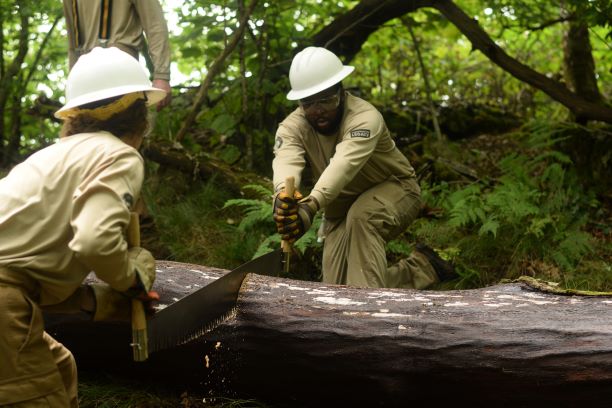Emerging Leaders Forest Management Capacity Building Program
Written by Jan Pender, Program Manager, Conservation Legacy
A diversity of agencies and non-profit organizations are partnering to develop a program to build capacity to address forest management needs, particularly prescribed burning, on eastern North Carolina public and private lands. The partners include North Carolina State Natural Resources Foundation (NCSNRF); Conservation Legacy – Conservation Corps North Carolina (CCNC); Eastern North Carolina (ENC) Sentinel Landscape Partnership; USDA Natural Resources Conservation Service; North Carolina Forest Service and the United State Forest Service.

The partners will pilot the program in 2021 with one 12-month crew of four AmeriCorps members and one leader. The small group or “crew” will conduct prescribed burning in targeted counties when conditions permit and perform other requested forest management activities other times of the year. The crew will serve private landowners enrolled in NRCS programs, land management agencies, and non-profit land managers. Conservation Corps North Carolina, a program of Conservation Legacy, will manage the crew. The crew will be based out of North Carolina State University’s Hill Research Forest. In addition to providing land managers with a mechanism to incre ase their forest management capacity, the program will provide opportunities for young people to learn about forest stewardship, earn valuable certifications, and learn job skills. The goal is to expand the program over the next three to five years with more crews operating to address forest management needs in more areas of North Carolina and the Southeast.
Research shows that the number one impediment to prescribed burn implementation is capacity. This partnership’s ability to operate a well-trained crew that can respond on a moment’s notice to conditions conducive to burning will fill one of the Southeast forested landscape’s most critical needs. The program will also train a new generation of natural resources leaders to serve private landowners, public agencies, and non-profit landowners through program implementation. These new capacities will advance the region’s shared stewardship goals, conservation, climate resilience, and community development.
